Head restraints
WARNING:
Head restraints supplement the other vehicle safety systems. They may provide additional protection against injury in certain rear end collisions. Adjust the head restraints properly, as specified in this section. Check the adjustment after someone else uses the seat. Do not attach anything to the head restraint stalks or remove the head restraint. Do not use the seat if the head restraint has been removed.
If the head restraint was removed, reinstall and properly adjust the head restraint before an occupant uses the seating position. Failure to follow these instructions can reduce the effectiveness of the head restraints. This may increase the risk of serious injury or death in a collision.
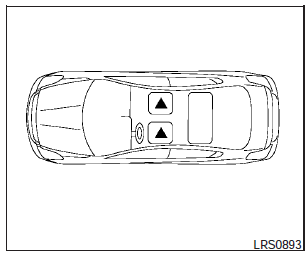
The illustration shows the seating positions equipped with head restraints. All of the head restraints are adjustable.
- Indicates the seating position is equipped with a head restraint.
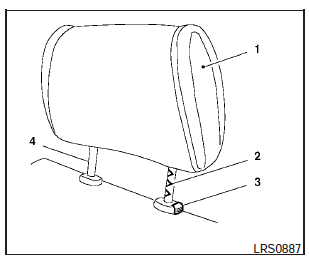
Components
1. Head restraint.
2. Adjustment notches.
3. Lock knob.
4. Stalks.
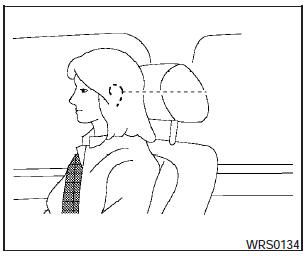
Adjustment
Adjust the head restraint so the center is level with the center of the seat occupants ears.
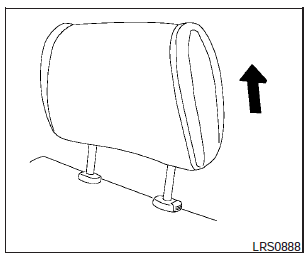
To raise the head restraint, pull it up.
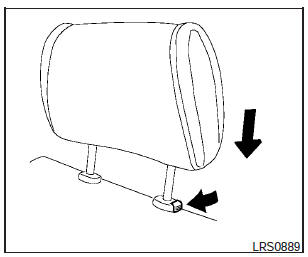
To lower, push and hold the lock knob and push the head restraint down.
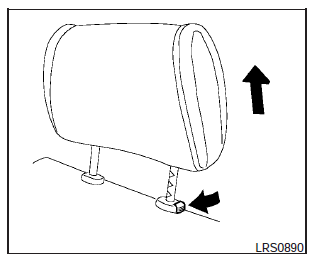
Removal
Use the following procedure to remove the adjustable head restraints.
1. Pull the head restraint up to the highest position.
2. Push and hold the lock knob.
3. Remove the head restraint from the seat.
4. Store the head restraint properly so it is not loose in the vehicle.
5. Install and properly adjust the head restraint before an occupant uses the seating position.
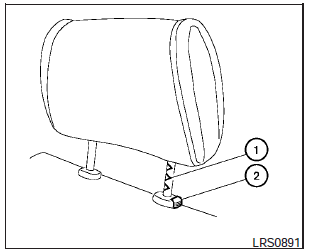
Install
1. Align the head restraint stalks with the holes in the seat. Make sure the head restraint is facing the correct direction. The stalk with the adjustment notchess 1 must be installed in the hole with the lock buttons 2 .
2. Push and hold the lock knob and push the head restraint down.
3. Properly adjust the head restraint before an occupant uses the seating position.
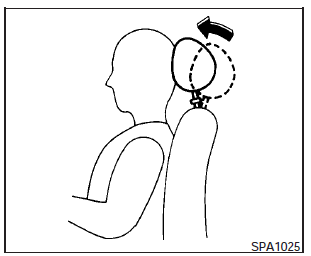
Front-seat Active Head Restraints
The Active Head Restraint moves forward utilizing the force that the seatback receives from the occupant in a rear-end collision. The movement of the head restraint helps support the occupant s head by reducing its backward movement and helping absorb some of the forces that may lead to whiplash-type injuries.
Active Head Restraints are effective for collisions at low to medium speeds in which it is said that whiplash injury occurs most.
Active Head Restraints operate only in certain rear-end collisions. After the collision, the head restraints return to their original position.
Adjust the Active Head Restraints properly as described in this section.
See also:
Compact disc (CD) player operation
If the radio is already operating, it automatically
turns off and the compact disc begins to play.
CD button:
When the CD button is pressed with the system
off and the compact disc loaded, the s ...
Interior light
The interior light has a three-position switch and
operates regardless of ignition switch position.
- When the switch is in the ON position (1) ,
the front and rear personal lights will illumin ...
Radio
With the ignition placed in the ACC or ON position,
press the PWR (power)/VOL (volume) knob
to turn the radio on. If you listen to the radio with
the engine not running, the ignition should be
pla ...
